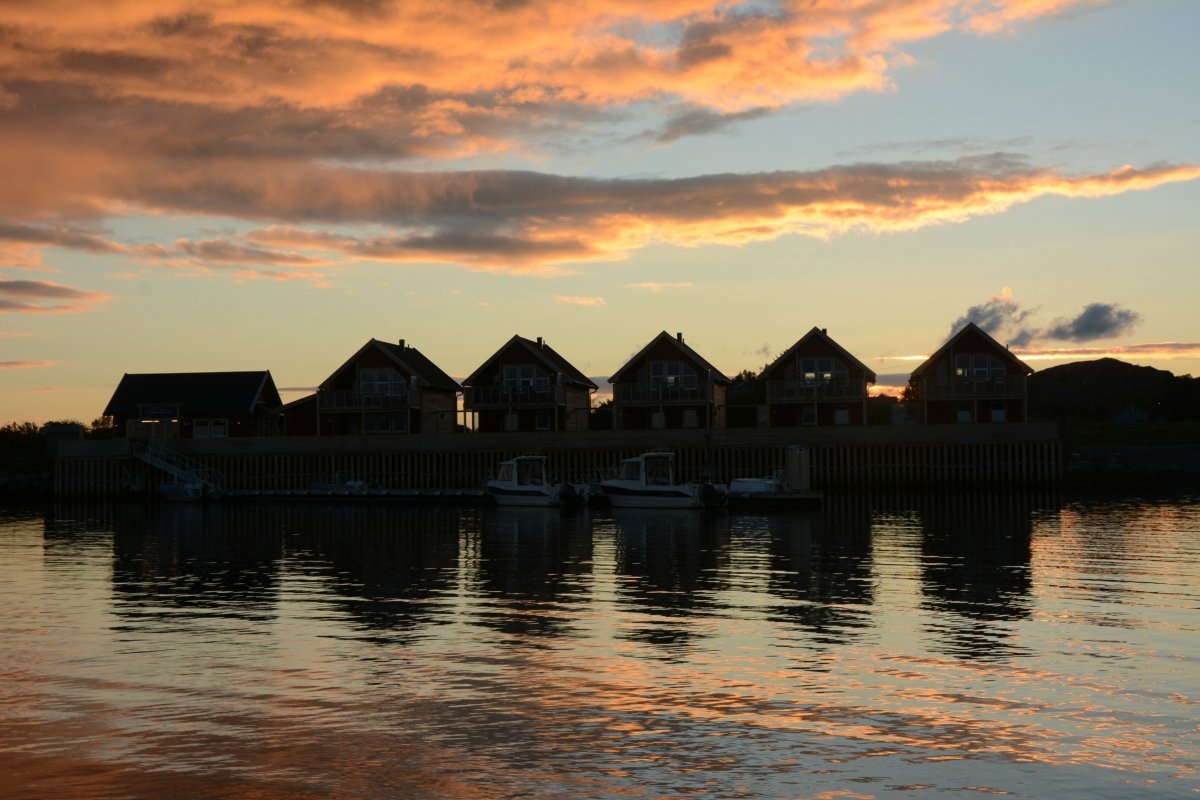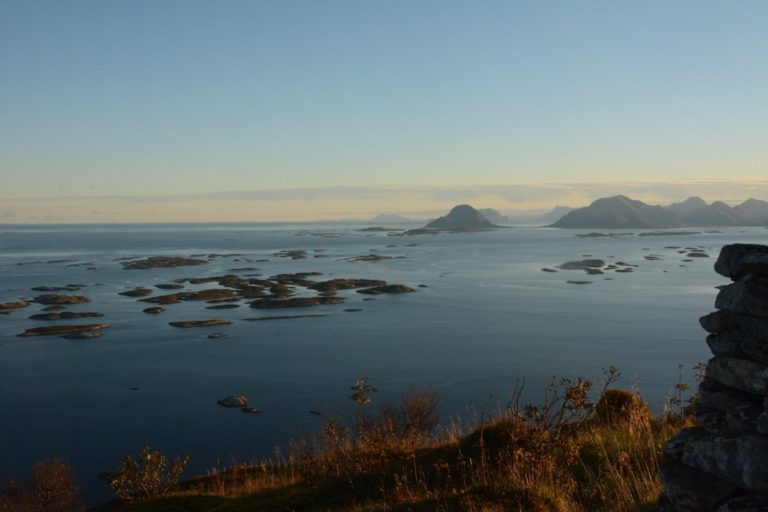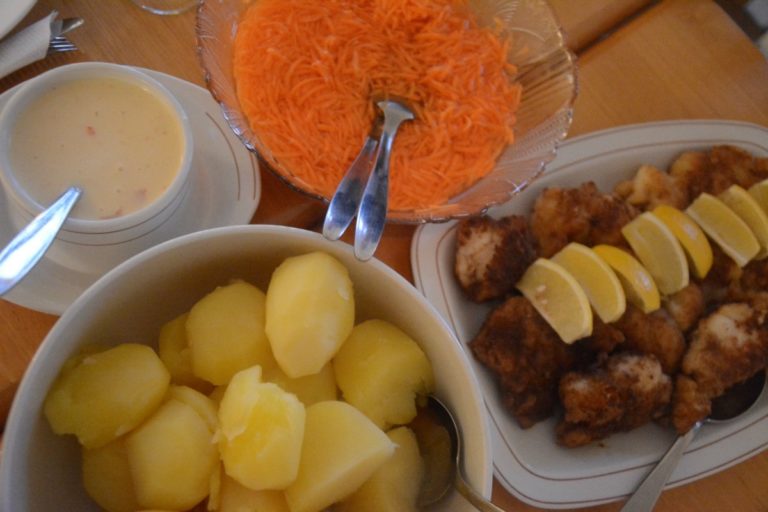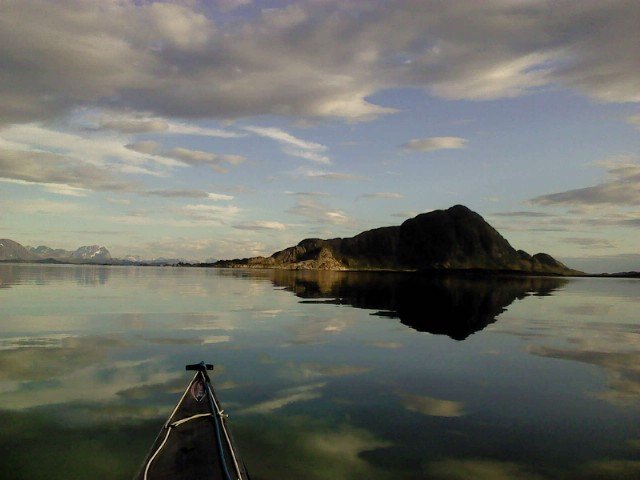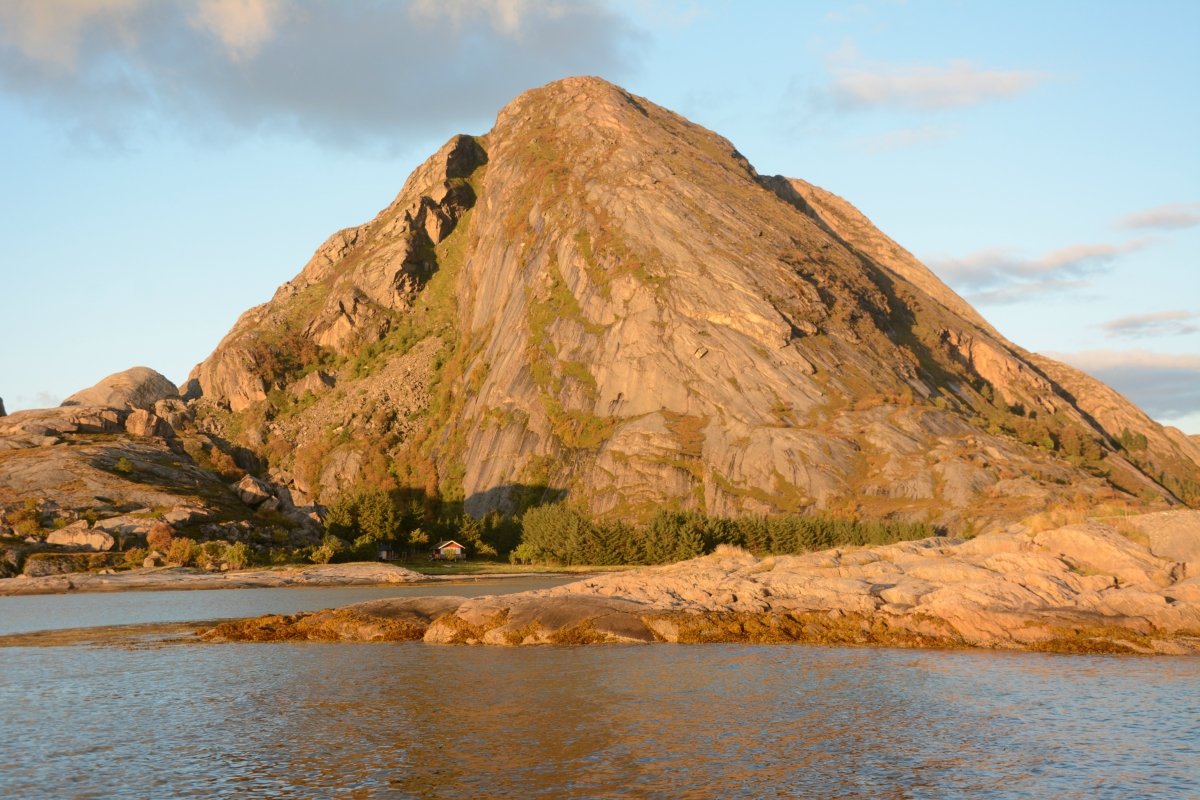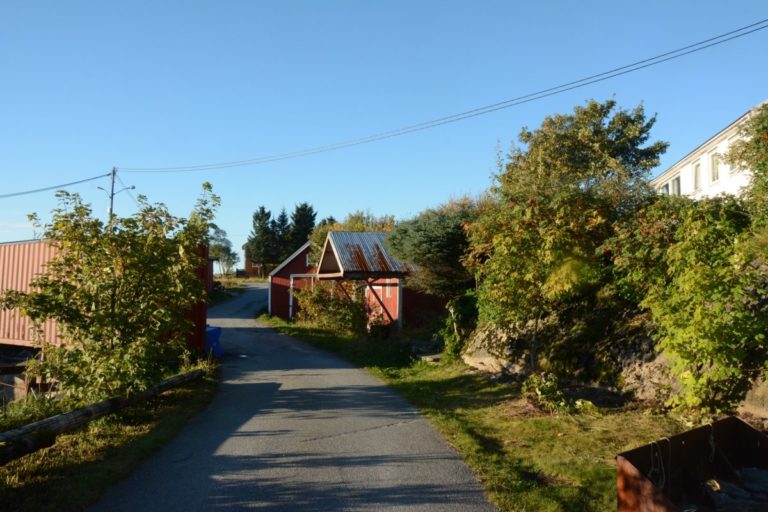The first thing you see on the road out to Bolga is its sharp peak. This is an old sailing landmark for shipping. As you get closer, you start to see meadows and buildings. The 100 or so inhabitants of Bolga live clustered on the south-eastern side of the island. Here there are flat, green fields and a dense cluster of modern houses with well-tended gardens and some old, beautifully maintained Nordland houses. A sheltered harbour has a visitor’s quay and the small fish processing plant provides employment for many locals. You can see the nearby salmon pens out in the strait. Services are available in a small shop and a bar.
Bolgbørra and Ruggesteinen are a stones throw away
Bolgbørra is a natural hole in the rock, a cave with two entrances. From just beside the school, you climb up a steep slope and after that it’s an easy matter to get into the cave. When you come out the other side though, the view is completely different, and on clear days you can see as far as the Lofoten Wall in the north. Ruggesteinen is a 60 tonne chunk of rock on the western tip of the island. The amazing thing about it is that it wobbles, so that a person just needs to push it to make it rock. This stone is easy to get to, and provides a lovely view of Bolgværet, the profusion of islets off the outer coast.
Practical information about Bolga
Bolga is an island located in Meløy municipality, Nordland County. To get to the island it’s best to drive the coastal route Fv17 to Ørnes where you can take the Ørnes to Meløy ferry and then transfer to the Meløy to Bolga ferry. If you are travelling with the Hurtigruten, Ørnes is one of the stops on the route.
Visit Helgeland have a great website with accommodation and activity information about Bolga and the rest of Helgeland. Meanwhile the Bolga Brygge webpage has good information about the island with contact information to enquire about any queries you may have.
Summer and autumn is a great time to visit Bolga as the weather is usually mild and calm meaning kayak trips and hiking are possible, not to mention the stunning views. As Bolga is an island off the coast, the winters are not too harsh and snow is never of a great depth. This means the island is accessible year round depending on what you may have planned. In the winter time auroras can be seen to the north but storms can roll in, so be prepared if you plan to take a winter trip here.
Bolgværet offers a different island for each day of the year
West of Bolga, the 365 tiny islands, one for every day of the year, are known as Bolgværet. Until the 1960s, many people lived out here in villages, but then the residents received grants to encourage them to move, so they left. Their houses are still there, some beautifully maintained as holiday cabins, while others have fallen into disrepair. Bolgværet is still in use; the aquaculture installations are out here in sheltered spots in this island kingdom. This is a first class kayaking landscape, so you can bring a tent and camp overnight on your own island. You can also hire a boat at the quay on Bolga.
You can earn your kayaking wet card on Bolga
Marit Swensen runs kayaking courses and offers kayak hire on Bolga. Beginners can go on a short three-hour trip and get to experience kayaking among the Helgeland skerries that provide shelter from the open ocean. It’s also a very special feeling to sit upon the water in a kayak and look in towards Svartisen and the impressive peaks of the mainland. After a two-day kayaking course, you get what’s known as your ”wet card’, which means you can hire a kayak and explore the archipelago independently.
Hiking Bolgtinden is no easy feat
Bolgtinden, the highest point of the island at 338 metres (1,108 feet), can be reached after an extremely entertaining walk of a good hour. You will have clambered, hauled yourself up on a rope, picked your way over marshland, and crawled over a ridge. However, it’s not scary or dangerous, and you don’t have to be fit, so families can easily manage it. The effort is worth the reward – the view from the top is like looking at a map of the Nordland coast. To the south are the thousands of islands and fairytale peaks of Helgeland, to the north you can see the mountains around Bodø, and out to sea you can just make out Værøy and Røst in the distance.
The pub on Bolga offers home style cooking to make you feel at home
Britt at the pub on Bolga served us fried monkfish with boiled potatoes, grated carrot and a delicious sauce. This kind of cottage cooking can be found on most kitchen tables on Bolga and further up the coast, but is rarely seen on restaurant menus. All summer long, a procession of tourists, boaters from Helgeland, Salten and Bodø, fishermen, choirs, teams and associations arrive on Bolga, and Britt serves them all the ever-changing fish of the day. In summer, the pub is open every day, and in winter, you just need to phone up beforehand.
Accommodation and boats are aplenty
The modern fishing port of Bolga Brygge has modern, spacious ‘rorbu’ fisherman’s cabins with fantastic views. There are also private houses for rent, and Fiskebrygga, which offers simple and affordable accommodation. Out here, it’s best to book beforehand. The Nordland Express boat stops on Bolga between Bodø and Sandnessjøen, and local boats run from Grønnøy in the south of Meløy municipality. There is also a car ferry from Ørnes.
